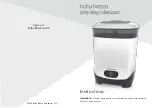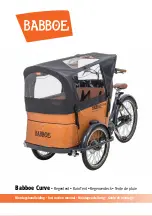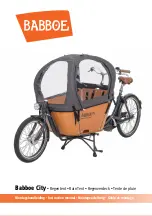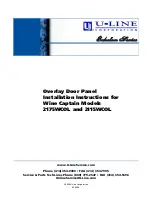
5
Figure 8: Releasing the locking mechanism
Figure 9: Ratchet fully opened 180°
5.2 RELEASING THE TENSIONING STRAP
6. MAINTENANCE AND CARE
7. NOTES REGARDING ENVIRONMENTAL PROTECTION
8. CONTACT INFORMATION
The textile section of the tensioning strap is maintenance-free when used in accordance with the intended purpose. Clean the ratchet mechanisms after use out-
doors to remove dirt and dust. Lightly lubricate the ratchet mechanism after cleaning using a light, thin oil.
Dispose of the tensioning strap via the residual or household waste when it is taken out of service, in the event of tears, cuts or abrasion wear.
Make sure that, when releasing the tensioning strap, the load is not able to fall over or down. There is a risk of injuries and the vehicle/load may
be damaged.
Pull the lock towards the end of the tensioning lever (Figure 8). Hold the locking mechanism firmly and unfold the ratchet completely (180°) (Figure 9). With the
locking mechanism held, the wrapping mechanism is free and you are able to release the tensioning strap.
EAL GmbH
Otto-Hausmann-Ring 107
42115 Wuppertal
Germany
+49 (0)202 42 92 83 0
+49 (0) 202 42 92 83 – 160
[email protected]
www.eal-vertrieb.com
Figure 1: Cargo on the loading area
Figure 2: Put on the tensioning belt
Figure 3: Belt guide above the load
Figure 6: tensioned belt
Figure 7: Closed ratchet
Figure 4: Opened ratchet
5. OPERATING INSTRUCTIONS
5.1 LASHING THE LOAD
Place the load on the loading area.
Guide the lashing strap through the lashing eyes and over the load.
Connect the two ends of the strap. Open the ratchet as far as possible (Fig. 4). Pass the free end of the strap through the slit in the ratchet‘s winding mechanism (Fig. 5). Pull the
tensioning strap completely through the winding device by hand.
Tension the belt by holding the free end of the belt taut with one hand and closing and reopening the ratchet tensioning lever several times with the other hand. For secure fastening,
at least 1.5 windings must be around the device. Close the ratchet (Figure 7).
Secure the rest of the loose belt.
Figure 5: Winding device





























